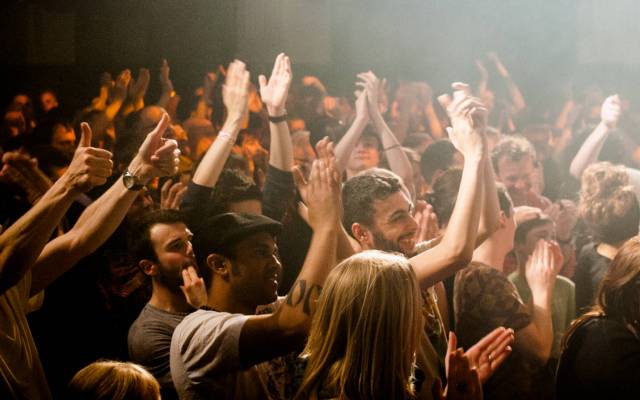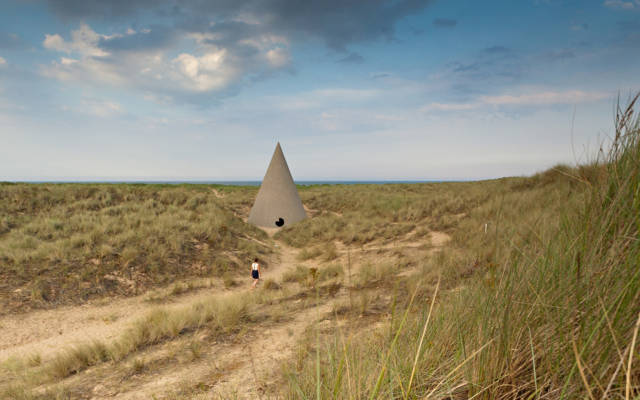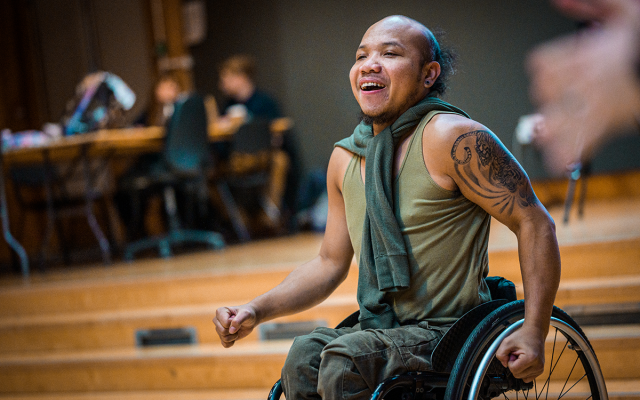08.02.21
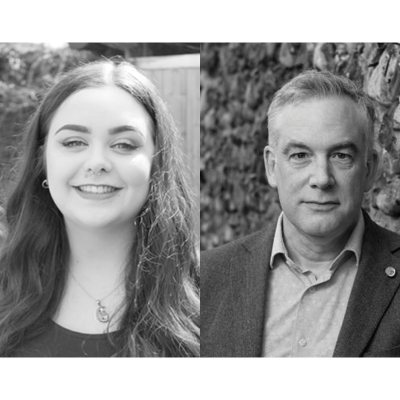
LGBTQIA+ Arts: Queering Careers, Communities and Festivals
February marks LGBTQIA+ History Month. Regardless of whether or not you’re a fan of the ‘history month’ model (spoiler: we’re not!), we took this as an opportunity to discuss the role of personal queerness in a professional setting. In this post, Production & Programme Assistant Abbie and Artistic Director Daniel speak on queering their career paths, continuing the work of those before us, and the future of LGBTQIA+ representation at the Festival.
If at all, how has your own queerness shaped you artistic interests?
Daniel: The first subsidised exhibition I curated was called HOMOcraft, which opened at the Sydney Gay and Lesbian Mardi Gras, and toured nationally in Australia. It was all about the way we choose to represent identity. Reading the essay [from the exhibition catalogue, pictured below] is an extraordinary thing now. It starts off talking about the changes in the Australian census, which for the first time was going to monitor same-sex couples, and then talks about the signs and symbols we use to ‘recognise’ each other. In HOMOcraft, some of the works were specifically relating to AIDS, loss and memorial, and other were about different ways of looking at (and for) identity.
I’m sharing this because in the beginning of my career (we’re talking early/mid 1990s), queerness was central to what I was doing. I was working at the Australia Council for the Arts, where I felt welcome and supported as a gay man in the workplace. I was also on the Mardi Gras festival committee at the time when it was Australia’s largest community festival. For me, as a young person at the start of my career, it was super interesting in terms of what I could get involved with.
A good example was that the director of my department gave me the chance to contribute to a project establishing guidance for estate planning for people living with HIV/AIDS. This was important at the time – and it comes up a bit in It’s A Sin – because people living with HIV/AIDS were not planning for their estates. It was a big thing for artists, because without plans there was the potential for families to ignore the wishes of the artists and life partners and dispose of belongings and art (and not care for the long-term concerns of intellectual property). It was not unheard of for families to come in and clear someone’s home without consulting friends and lovers. I was so submerged at the time that my boyfriend was even an artist who was known for his work around gay identity and AIDS politics.
‘I think this question, of how we stand on the shoulders of other, is a really relevant question now. That’s why It’s a Sin is interesting for me – not only because it marks a moment in time but it also helps us reflect on now.’
When I try to understand where I fit now, it’s important for me to think about how we all stand on the shoulder of others. That was something I’ve always been aware of and something I learnt a lot about at the time of curating HOMOcraft. It was important to acknowledge the lives of the people who were no longer with us, but I also tried to get older people involved who had much longer associations with the queer community. I think this question, of how we stand on the shoulders of other, is a really relevant question now. That’s why It’s a Sin is interesting for me – not only because it marks a moment in time but it also helps us reflect on now.
Abbie: As someone early in my career, I’ve had different experiences to Daniel. My background is that I grew up in the middle of nowhere, in the middle of a field, and no one around me, to my knowledge, was also queer. I think that context really shaped who I became as a creative. I’ve always been searching for those stories, which wasn’t necessarily easy until, when I was 16, I moved more centrally to Norwich, and then when I was 18 I moved to London, which is a whole other story.
Being a teenager and a young adult, quite naturally the people that I grew to love were also queer, as we had similar life experiences. You find a lot of support and commonality there. What I’m always looking for is to see myself and the people I love reflected in the art I’m seeing, which relates back to what you were saying Daniel, of wanting to see queer creatives getting the recognition they deserve for the contribution they’ve made to art.
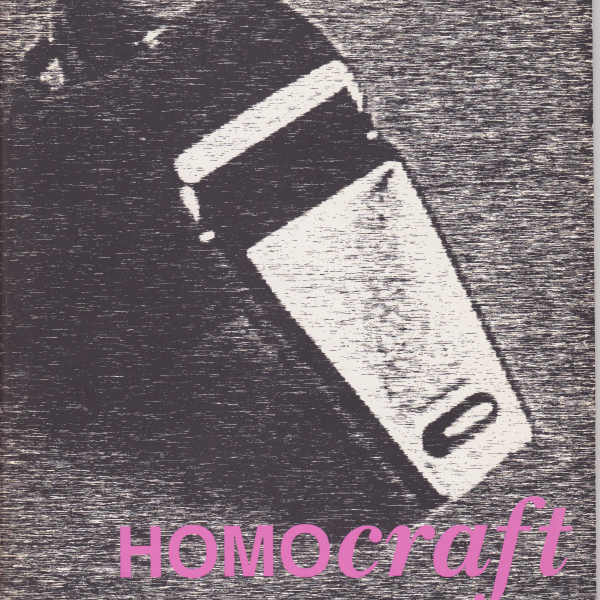
‘Working with those authentic stories, rooted in queer peoples’ experiences, and seeing how that translated into physical movement depicted on stage, was that moment where I was like, ‘yeah, this is something that I really want to be seeing’’
Do you feel that your queerness played a part in shaping aspects of your career or creative identity so far, and if so, how?
Abbie: I’ve been lucky enough to have varying experience so far. I’ve worked in producing, production, as a director, and more on the creative side of things. My specialism is more in physical theatre, and that is what a lot of my study has been in. I think physical theatre has the potential to really move away from some of the norms of dance, which is quite often rooted in heteronormativity. I was getting a bit frustrated during my study by not seeing the reigns being taken, particularly in the UK, to move away from those stereotypes. For me as a director, that was making me think about queer bodies and queer stories in physical theatre.
Quite a defining moment for me was directing my second full-length show, Confessions, where a significant portion of the cast I was working with identified as queer. Working around anonymous confessions from individuals in the company, it centred a lot around ideas of identity, particularly for certain queer members of the cast. Working with those authentic stories, rooted in queer peoples’ experiences, and seeing how that translated into physical movement depicted on stage, was that moment where I was like, ‘yeah, this is something that I really want to be seeing’. That was a tipping point for me.
Moving forward, I’m looking to pursue a career as a freelance producer. I’m a sucker for bringing those queer stories into the foreground, and so I’d be hoping to work with queer companies and artists in the future.
Daniel: When I came to the UK in the late 1990s, I was lucky enough to work for Arts Council England (ACE) and then for the Live Art Development Agency (LADA). At ACE, I was responsible for the Live Art and Interdisciplinary Funds, and then at LADA I worked for eight years with Lois Keidan. A lot of our focus at LADA was championing new ways of working which had at its heart challenging assumptions and traditions of artistic practices and questioning the relationship with audiences. And because of this positioning of questioning the established it was attractive to and supportive of marginalised voices.
I was lucky to work with Lois on Live Culture at Tate Modern in 2003, which was the first time Tate had shown live performance in its galleries. We put this event on because we particularly wanted to bring some of these marginalised voices to the heart of the cultural establishment. It also coincided with a time when the visual art world was also questioning the place of performance so the event felt particularly relevant and opened up dialogues about how traditional artistic practices were possibly failing diverse voices – something we still see everywhere. It was an exciting professional time for me and at LADA. We were working with fantastic artists – many of them queer like Franko B, Ron Athey, Lois Weaver of Split Britches, curious (who were in the Festival in 2019, pictured below), Robert Pacitti, who set up SPILL Festival, Stacy Makishi and moti roti… I found myself immersed in an artistic world where queerness wasn’t out of place.
I was immersed professionally, but that was also the challenge, professionally. How do I take the things I’ve learnt from the Live Art sector and apply them in a broader arts context. That’s what I did in the end. It was very difficult to leave the Agency, but I did because I thought I could take some of the exciting stuff from that sector and work towards change across the arts.
I know, for some people, that I’m a sell-out. But I’ve seen it as a risk – to take some of the ideas of risk and experimentation and to apply them to ‘traditional’ cultural models like arts centres and multi-artform festivals. There’s a generation of us from that artistic world who have gone on to do interesting things in the arts: Mark Ball is now leading the creation of The Factory for Manchester International Festival and Jackie Wylie is the director of the National Theatre of Scotland. Each of us has learnt from Live Art and the ways artists – including queer artists – can do things differently.
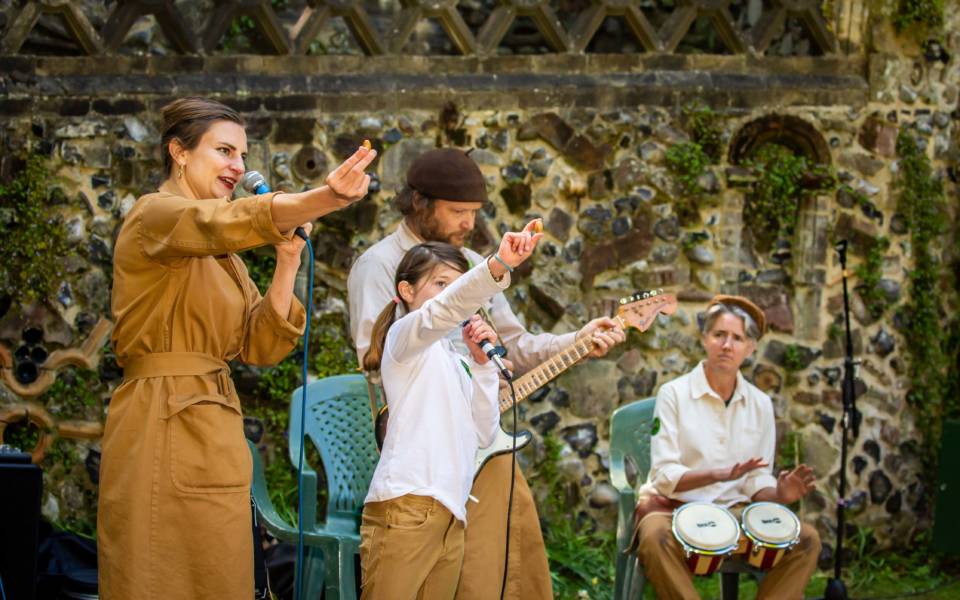
What role does this queer viewpoint play in shaping a Festival programme?
Daniel: That’s a tricky question. I think the answer is that I look for stories which people are telling and for people who have something to say. I’m aware that I have to make a judgement about what is something worth listening to. I definitely don’t subscribe to ‘you’re queer and therefore you’re interesting’. It doesn’t work like that. I’m looking for artists who have a skill or an ability to say something and connect with audiences.
I think one of the joys of being young is that you create your own opportunities, therefore you create your own responsibilities, and therefore you can almost do what you want. But if you’re working in institutions, as I’ve chosen to do, you have a responsibility to the institution, and that institution will have a responsibility to artists, audiences, funders and supporters. Part of that is the job, but the job is also finding a programme that’s artistically exciting. You’ve got to try and find a balance and, of course, the two may not exclude each other.
I don’t know if I’d go looking for queer content, as such, but I’m acutely aware that I may consider a fair bit of queer content just by the fact that it catches my eye and interests me. But I won’t really separate it from the rest of my interest in unique and interesting artistic voices.
Does the Festival have responsibilities to Norfolk’s queer audiences? …If so, what?
Abbie: I think it does, but not just to Norfolk’s queer audience. The Festival is in a really unique position to bring things to Norfolk that don’t get to be seen year round, or wouldn’t be seen otherwise. I would say that the Festival is, in part, about bringing queer stories to the people of Norfolk and Norwich, rather than solely to Norfolk’s queer audience. Essentially, I think we at the Festival have the responsibility to share a wealth of stories and experiences on our stages; including queer stories, as well as disabled people’s stories and artwork, and of those who are black or of the global majority.
There’s an interesting balance between providing a programme that is what the people of Norfolk say that they’re looking for, and providing them with thing they wouldn’t necessarily have thought of seeing, but are grateful that they did.
What role would you like to see the Festival playing in Norfolk’s queer arts scene in the future?
Abbie: I think a lot of our queer art is typically in the context of the Adnams Spiegeltent, or in a cabaret style format. I’d quite like to see some of that move to a different stage, or having a different visibility. I’d like to see more visible trans and non-binary stories, and more queer women. I’m very excited about some of the upcoming partnerships.
I also think that outdoor arts offers a really unique opportunity to be pervasive and flip things on its head. It’s not constricted by norms that have developed over hundreds and hundreds of years in establishments and venues. There’s something really empowering about seeing queerness in a public space. It’s freeing. Outdoor arts has a really strong queer base in many ways, particularly with a lot of it coming from circus. I think that’s one of the reasons why, as a queer creative, I gravitate towards it. There’s that opportunity to be free, and be visible, which pertains to both queer artists, and to disabled artists and to artists of colour. To be visible in a public space is a political act in itself.
It also tends to be quite joyful – a joyful taking up of space. Outdoor art doesn’t always lend itself to discussing complicated or difficult topics, but what it does do is allow space for joy, fun, play and experimentation. I think we’ll see a gravitation of queer artists to working outdoors in the future, particularly in light of COVID, just out of the freedom of it.
Daniel: Before Norwich, I was in Cambridge running an arts centre. The beauty of an arts centre is that you can open up the programming voice to others. At Cambridge Junction, I worked with Gil Karpas, who set up Ahbab, an Arabic music festival. It was brilliant, because he brought an expertise that we didn’t have and created something which a whole audience we weren’t reaching wanted to attend. Similarly, Cambridge Junction was always a centre for queer club nights (Dot Cotton being the famous one) and welcoming those communities into the venue is a special way of working – I really do love that idea of shared voice.
‘at some time certain voices are going to be more coherent, more valid, more engaging than others, and the Festival should try to include these‘
In an ideal world, the Festival will represent community voices. You can’t represent them all but you have to listen-out because at different times, some communities will be doing really exciting things. It might be that an interesting queer artistic voice emerges from the Norfolk club scene, in which case it’d be really lovely for that to come into the festival. But similarly, things might come in through a new Black collective or a craftivism network. There are energies which shift, and if the Festival is doing a good job, it will pick up those energies. It’s tricky, because some people might understand this as ‘everyone’s voice will have a place at the Festival’ but that’s not what I’m saying. I’m saying that at some time certain voices are going to be more coherent, more valid, more engaging than others, and the Festival should try to include these.
Masthead Image: Frock, Stopgap Dance, Festival 2019 © JMA Photography
Copy Image: HOMOCraft exhibition catalogue cover
Wild Longings, Curious, Festival 2019 © Mary Doggett
